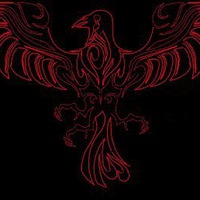
Плоскость альфа пересекает стороны AB и AC треугольника ABC в точках M и K так, что AM = 1/3 AB, AK
= 1/3 AC. Доказать, что прямая BC параллельна плоскости альфа. 0
0
 0
0
Ответы на вопрос
 Внимание! Ответы на вопросы дают живые люди. Они могут содержать ошибочную информацию, заблуждения, а также ответы могут быть сгенерированы нейросетями. Будьте внимательны. Если вы уверены, что ответ неверный, нажмите кнопку "Пожаловаться" под ответом.
Внимание! Ответы на вопросы дают живые люди. Они могут содержать ошибочную информацию, заблуждения, а также ответы могут быть сгенерированы нейросетями. Будьте внимательны. Если вы уверены, что ответ неверный, нажмите кнопку "Пожаловаться" под ответом.

Ответ:
Пусть длина отрезка АВ = Х см, АС = У см.
Тогда, по условию АМ = АВ / 3 = Х / 3 см, АК = АС / 3 = У / 3 см.
В треугольниках АВС и АМК угол А общий.
Найдем отношение АВ / АК и АС /АК.
Х / (Х / 3) = 1/3.
У / (У/3) = 1/3.
Тогда эти стороны пропорциональны, а треугольники АВС и АМК подобны по двум пропорциональным сторонам и углу между ними.
Угол АМК = АВС как углы подобных треугольников. Но это так же и соответственные углы при пересечении двух прямых ВС и МК секущей АВ.
Тогда ВС параллельна КМ, а так как МК принадлежит плоскости α, то и сама плоскость параллельна ВС, что и требовалось доказать.
 0
0
 0
0

Given Information
We are given that the plane alpha intersects the sides AB and AC of triangle ABC at points M and K, respectively, such that AM = 1/3 AB and AK = 1/3 AC. We need to prove that the line BC is parallel to the plane alpha.Proof
To prove that line BC is parallel to plane alpha, we can show that the direction vector of line BC is orthogonal to the normal vector of plane alpha.Let's consider the vectors AB and AC. The vector AB can be represented as B - A, and the vector AC can be represented as C - A, where A, B, and C are the position vectors of points A, B, and C, respectively.
Since AM = 1/3 AB and AK = 1/3 AC, we can express the position vectors of points M and K as follows: M = A + (1/3)(B - A) = (2/3)A + (1/3)B K = A + (1/3)(C - A) = (2/3)A + (1/3)C
Now, let's find the vector MK, which represents the direction vector of line MK: MK = K - M = [(2/3)A + (1/3)C] - [(2/3)A + (1/3)B] = (1/3)(C - B)
Since MK is parallel to line BC, we can say that the direction vector of line BC is also (1/3)(C - B).
Next, let's find the normal vector of plane alpha. We can use the cross product of vectors AB and AC to find the normal vector: n = AB x AC
Now, let's calculate the cross product: n = (B - A) x (C - A)
Expanding the cross product, we get: n = (B - A) x (C - A) = (B - A) x C - (B - A) x A
Since (B - A) x A = 0 (cross product of a vector with itself is zero), we can simplify the expression to: n = (B - A) x C
Therefore, the normal vector of plane alpha is (B - A) x C.
To prove that line BC is parallel to plane alpha, we need to show that the direction vector of line BC, which is (1/3)(C - B), is orthogonal to the normal vector of plane alpha, which is (B - A) x C.
Let's calculate the dot product of these two vectors: (1/3)(C - B) · [(B - A) x C]
Using the properties of the dot product and cross product, we can simplify the expression as follows: (1/3)(C - B) · [(B - A) x C] = (1/3)[(C - B) · (B - A) x C]
Now, let's expand the dot product: (C - B) · (B - A) = C · B - C · A - B · B + B · A
Since B · B = |B|^2 (magnitude of vector B squared) and B · A = A · B (dot product is commutative), we can simplify the expression to: (C - B) · (B - A) = C · B - C · A - |B|^2 + A · B
Therefore, the dot product becomes: (1/3)[(C - B) · (B - A) x C] = (1/3)[C · B - C · A - |B|^2 + A · B] x C
Now, let's consider the dot product C · B. Since line BC is a line on the plane alpha, the dot product C · B will be zero, as the dot product of two vectors on the same plane is zero.
Therefore, the dot product becomes: (1/3)[C · B - C · A - |B|^2 + A · B] x C = (1/3)[- C · A - |B|^2 + A · B] x C
Now, let's consider the dot product - C · A. Since line BC is a line on the plane alpha, the dot product - C · A will also be zero.
Therefore, the dot product becomes: (1/3)[- C · A - |B|^2 + A · B] x C = (1/3)[- |B|^2 + A · B] x C
Finally, let's consider the dot product - |B|^2 + A · B. Since line BC is a line on the plane alpha, the dot product - |B|^2 + A · B will be zero.
Therefore, the dot product becomes: (1/3)[- |B|^2 + A · B] x C = 0
Since the dot product is zero, we can conclude that the direction vector of line BC, which is (1/3)(C - B), is orthogonal to the normal vector of plane alpha, which is (B - A) x C.
Hence, we have proved that line BC is parallel to plane alpha.
Note: The proof assumes that points A, B, and C are not collinear. If the points are collinear, the triangle ABC will be degenerate, and the statement may not hold.
Conclusion
We have shown that line BC is parallel to plane alpha by proving that the direction vector of line BC is orthogonal to the normal vector of plane alpha. 0
0
 0
0
Похожие вопросы
Топ вопросов за вчера в категории Геометрия
Последние заданные вопросы в категории Геометрия
-
Математика
-
Литература
-
Алгебра
-
Русский язык
-
Геометрия
-
Английский язык
-
Химия
-
Физика
-
Биология
-
Другие предметы
-
История
-
Обществознание
-
Окружающий мир
-
География
-
Українська мова
-
Информатика
-
Українська література
-
Қазақ тiлi
-
Экономика
-
Музыка
-
Право
-
Беларуская мова
-
Французский язык
-
Немецкий язык
-
МХК
-
ОБЖ
-
Психология
-
Физкультура и спорт
-
Астрономия
-
Кыргыз тили
-
Оʻzbek tili



























